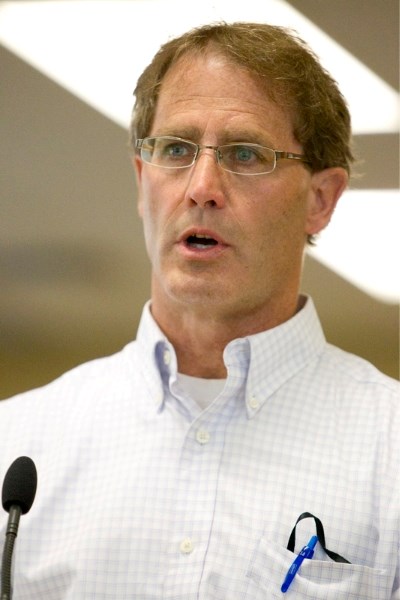There are no major “data gaps” on the impact of logging in the Red Deer River watershed, an official from Sundre Forest Products who also chairs the Red Deer River Watershed Alliance told Mountain View County councillors at their May 9 policies and priorities meeting.Forestry superintendent Tom Daniels was responding to comments by Div. 6 Coun. Paddy Munro, who in February blasted the RDRWA for ignoring the impact of logging and reiterated his concerns at P&P, asking Daniels: “Why don't they demand that this data gap be filled?”“I'm sorry, Paddy – I'm not aware of a data gap on forestry,” Daniels told Munro.When Munro countered that forestry had been identified as a sector with data gaps at a watershed alliance meeting, Daniels corrected him, saying forestry had simply been listed as “one of the indicators for the watershed” at that meeting.“At those stakeholder sessions,” Daniels continued, “forestry wasn't one of the big concerns.”Munro said council had no arguments about clear-cutting pine forest, a process that best replicates natural damage caused by fire. And while there was “a valuable trade-off” between the environment and wealth creation, he added, “to me it comes down to water and I just don't believe we're doing enough.”Daniels acknowledged during his presentation that the public's “No. 1 concern is water” and he outlined the water quality assumptions that are in place to manage the forestry road network, which of all logging activity, he said, could have the most adverse environmental impact.“On average we are building about 200 kilometres of road a year and also reclaiming about 200 kilometres of road a year,” Daniels said. “Generally if roads are well planned and properly constructed they should not be contributing to sediment loading.”With an inventory of 1,163 culverts and 410 bridge structures, crossings are the biggest source of potential problems, and practices are geared to minimize the ecological disturbance, he said. And, responding to another council concern, he said the industry's effect on water yield is “not correlated to flooding.”Dubbing transportation “a hot topic” in the county, woods manager Greg Neale said the company enters into road-use agreements and carries out route hazard assessments as a matter of protocol. As well, all trucks working for parent company West Fraser are identified with logos and numbers, and a rigorous inspection and monitoring regimen is followed.“The results, I think, speak for themselves,” Neale said. “We've had a really safe log haul for the last number of years and we haven't really had any accidents.”On average, he said, about 55 company trucks haul about 120 loads daily into Sundre.The Sundre Forest Management Area extends from north of Nordegg to just south of the Red Deer River, covering 430 square kilometres.The industry's main concern for the FMA remains the mountain pine beetle. The threat of an inflight from British Columbia is not expected to end until 2016, when it's forecast that 70-80 per cent of B.C.'s pine forest will be wiped out, Daniels said.“We've been lucky so far, but things will not be safe in our area until 2016, till there's a die-off in B.C. and the inflights stop,” he said.



